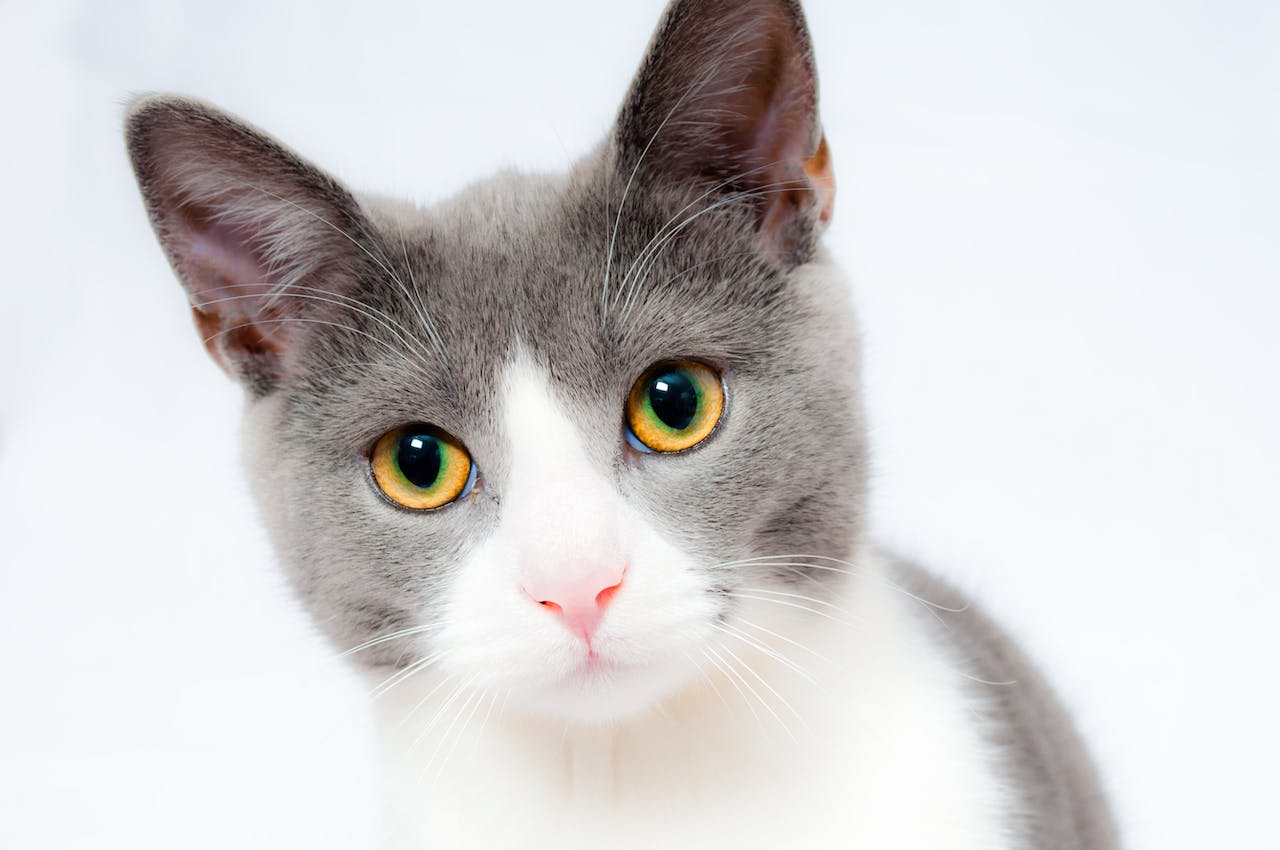Cat Pee 101: Is My Cat’s Urine Normal?

Nobody likes a smelly litterbox. While even the cleanest kitty condo will possess a particular perfume, how can a cat guardian separate stinky from sickly? How can you tell if your cat’s urine is normal?
Normal cat urine
Observing your cat’s urine is perhaps the biggest challenge. Litterboxes and modern litter do an excellent job of concealing sight and odor. Most felines demand total isolation when using the litterbox, making monitoring nearly impossible. With a little creativity and commitment, here are a few clues to reassure you that your cat is urinating normally:
Normal cat urine frequency
Cats evolved from the dry, arid regions of Mesopotamia1. Water was scarce, so they developed clever systems to maintain hydration. As a result, most healthy, adult indoor cats will urinate twice a day on average. How frequently your cat urinates will be influenced by water consumption, heat and humidity, amount of moisture in the food, and medical conditions such as kidney disease, bladder infections, liver problems, hormonal imbalances, and more2. It’s essential to know your cat’s normal daily urination and defecation habits. Some cats are perfectly fine urinating five times a day, while for others, that would signal a dramatic increase. Many cats use the litterbox only once or twice a day,and going four times would signal a problem. If your cat suddenly begins urinating more or less than usual, don’t delay. Any changes in frequency of urination should be checked by your veterinarian immediately.
Check out 6 Surprising Kidney Disease Facts for Cats >>
Normal cat urine color
Normal cat urine should be a clear, pale yellow3. “Golden” or “straw-colored” are often used to describe the yellowish hue of healthy urine. The urine shouldn’t be cloudy or difficult to see through. Changes in color (dark or light), cloudiness, or particulate matter (floating debris) are most often associated with bladder or kidney conditions.
Normal cat urine odor
If you have an adult, spayed or neutered cat, chances are your feline’s urine smell isn’t too strong. Normal urine will have a slightly pungent, acidic scent3 that is fairly inoffensive and generally weak.
Abnormal cat urine
Many cats experiencing a bladder or kidney problem will urinate outside the litterbox4. I tell cat guardians if their kitty is having “accidents” in the house, there is potential for serious disease and immediate veterinary attention is recommended.
Abnormal cat urine frequency
Any increase or decrease in frequency of urination is a concern. Decreased urination, often associated with straining, or vocalization can signal a urethral blockage, and more commonly occurs in male cats.5This type of obstruction can become life-threatening within hours. Increased urination can also be associated withbladder infections and cystitis (inflammation), a painful condition. More frequent urination can also be caused by diabetes, kidney disease, and behavioral problems. Going to the litterbox more or less frequently or urinating in unusual places may be the only way your cat can call for help. Heed the call quickly.
Abnormal cat urine color
The most common color change cat guardians report to me is dark or bloody urine. Frantic feline families call me describing a red-stained trail from litterbox to food bowl. If you notice any change in color, especially red-tinged urine, notify your veterinarian at once. My biggest worry is that blood clots, debris such as crystals or swelling due to inflammation or infection may lead to obstruction of the urethra, causing potentially life-threatening inability to urinate. Urethral blockage can occur in a few hours, making speedy medical or surgical treatment critical. Other changes to look out for are colorless urine. Pale, watery urine without a healthy golden glow often indicate dilute urine, a sign of kidney disease or diabetes. In general, if the color or constancy change is significant enough for you to notice, it’s significant enough to have it checked by your veterinarian.
Abnormal cat urine odor
Because odor is subjective and many cat guardians have developed what we call “olfactory fatigue” when it comes to their litterbox, sniffing a problem scent can be difficult for many. I’ve been bowled over by the scent shockwave when opening many cat carriers, if you know what I mean. Many urine malodors are associated with bladder infections and cystitis(inflammation)6. Tumors and hormonal disorders, especially in male cats, can also cause the urine odor to change dramatically. In general, if you smell something unusual in the litterbox, have your cat examined by your veterinarian.
The bottom line of the litterbox
The bottom line with “normal versus abnormal cat urine” is knowing what is typical for your kitty. Because a cat’s lower urinary tract is extremely susceptible to infection, inflammation, and provides insight into kidney function, diabetes, and other illnesses, observe closely for any changes in frequency, color, and odor. I often advice pet parents that “subtle can be significant” and this is exceptionally true with a cat’s urination. If your cat has abnormal urine, simple blood and urine tests can quickly tell your veterinarian about the appropriate diagnosis, treatment and prognosis. If treated early, most causes of abnormal urine in cats can be corrected and have your cat feeling frisky in no time.












